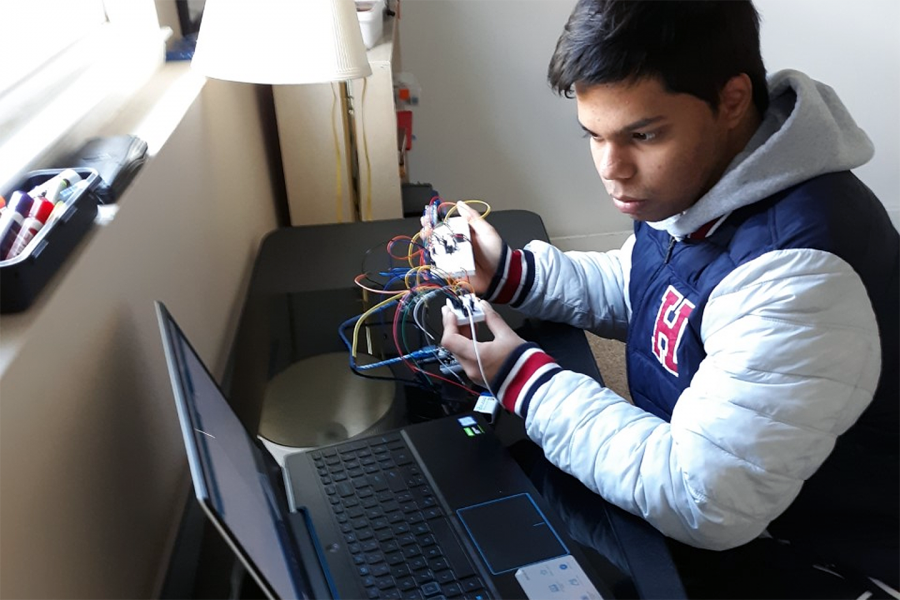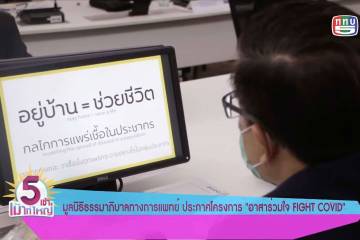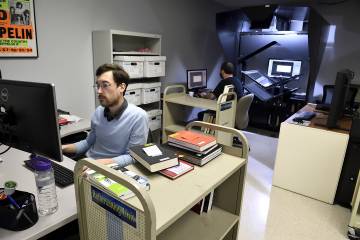When mechanical engineering junior Olivia Skaug was assigned to build a device used to transfer heat between fluids in her Heat Transfer Lab course, she felt more than ready. After all, she had access to a plethora of manufacturing tools, materials, and state-of-the-art testing equipment on the Homewood campus.
But cut to April and the spread of the novel coronavirus, and Skaug and her classmates must finish the semester remotely. Instead of using the professional tools and equipment in labs back on campus, she's constructing her device in the kitchen of her family home in Bear, Delaware, using household items like scissors, aluminum loaf pans, and duct tape.
"I've had to get inventive when finding tools and equipment to manufacture my heat exchanger, but it was a fun challenge to tackle," Skaug says. "Engineers have to deal with limitations and evolving specifications all the time. If anything, this is good practice for me to use creativity when faced with an engineering challenge."
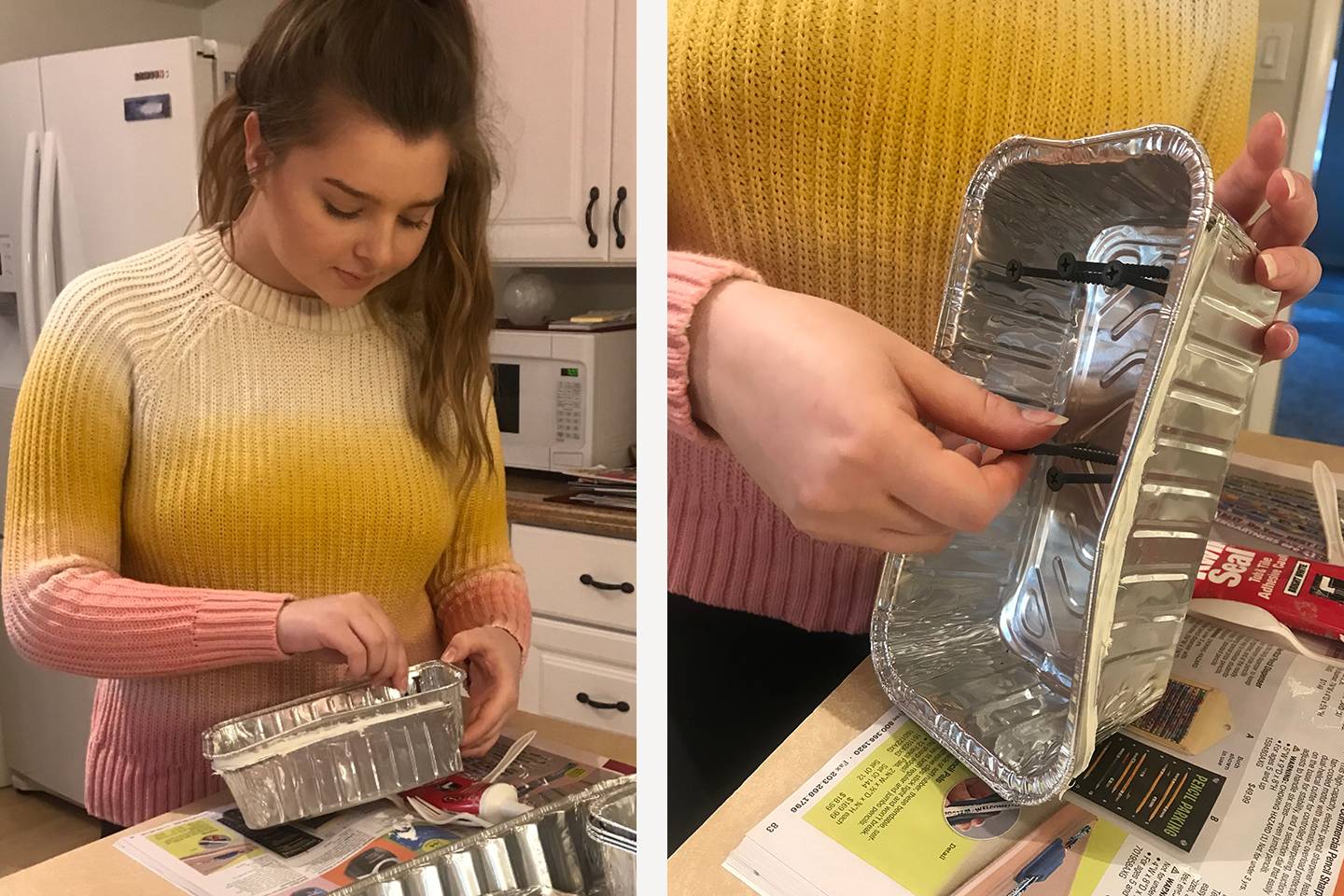
Image caption: Olivia Skaug constructs a heat transfer device from household products
Image credit: Courtesy of Olivia Skaug
Hands-on lab courses are an integral part of the learning experience for engineering majors. But with campuses closed and students far away from their workspaces, instructors who teach these courses are finding ways to make remote learning work.
Skaug's instructor, Steven Marra, associate teaching professor in the Department of Mechanical Engineering, had to shelve the original assignments for his three design-build courses—and turn 50 group projects into more than 150 individual projects that students could build at home.
"I had several questions to consider over spring break: What resources do students have at their homes? What items could be shipped to them, if necessary? What will the deliverables look like? Most importantly, how can I give my students a design experience comparable to what they would have on campus?" Marra says. "It's a bit overwhelming to keep track of everything, but I've been truly impressed by how much they've accomplished already."
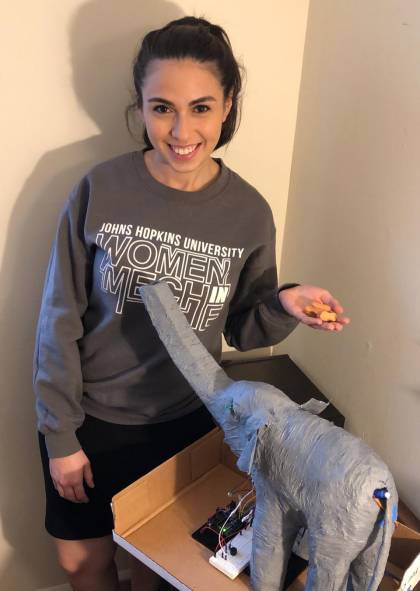
Image caption: Yocheved Kopel shows off her mechanical elephant, which wags its tail when fed a peanut
Image credit: Courtesy of Yocheved Kopel
First-year students were originally working in groups to build mechatronic animals using motors and sensors as part of an interactive "mechanical zoo" to be displayed on the Homewood campus at the end of the semester. Each student is now working on their own animal creation, such as an octopus with spinning legs and a peanut-eating elephant.
"At first, it was disappointing that I would not be able to use this project to improve my laser cutting and 3D printing skills," says Yocheved Kopel, who is working on the elephant at her apartment in Baltimore. "However, this situation forced me to be more thoughtful about the tools I use, and it certainly gave me an appreciation for scraps that I would throw out normally."
Some students took electronic kits and other parts and supplies home with them before leaving campus. Many, particularly international students, have been forced to improvise.
Junior Daniel Wang is unable to travel home to China and will stay in Baltimore. He's also building a heat exchanger but has few supplies around his apartment to complete the project. "The biggest frustration is the limited manufacturing capacity that is available to me," Wang says. "Professor Marra purchased a few items—a candy thermometer, aluminum foil, silicone sealant—and shipped them to us, which is very helpful."
Sophomores Aaditya Rau, Max Muss, and Alexander Klein are still working on their group assignment remotely, designing a small crane. The team members won't get to build the crane and compete against their classmates in the course's annual competition, but they are still proud of what they've accomplished.
"I'm very happy with how my group has continued to communicate and coordinate with each other virtually to complete different aspects of the design," Rau says. "When we had our first remote meeting with Professor Marra, we could clearly articulate and substantiate our design decisions."
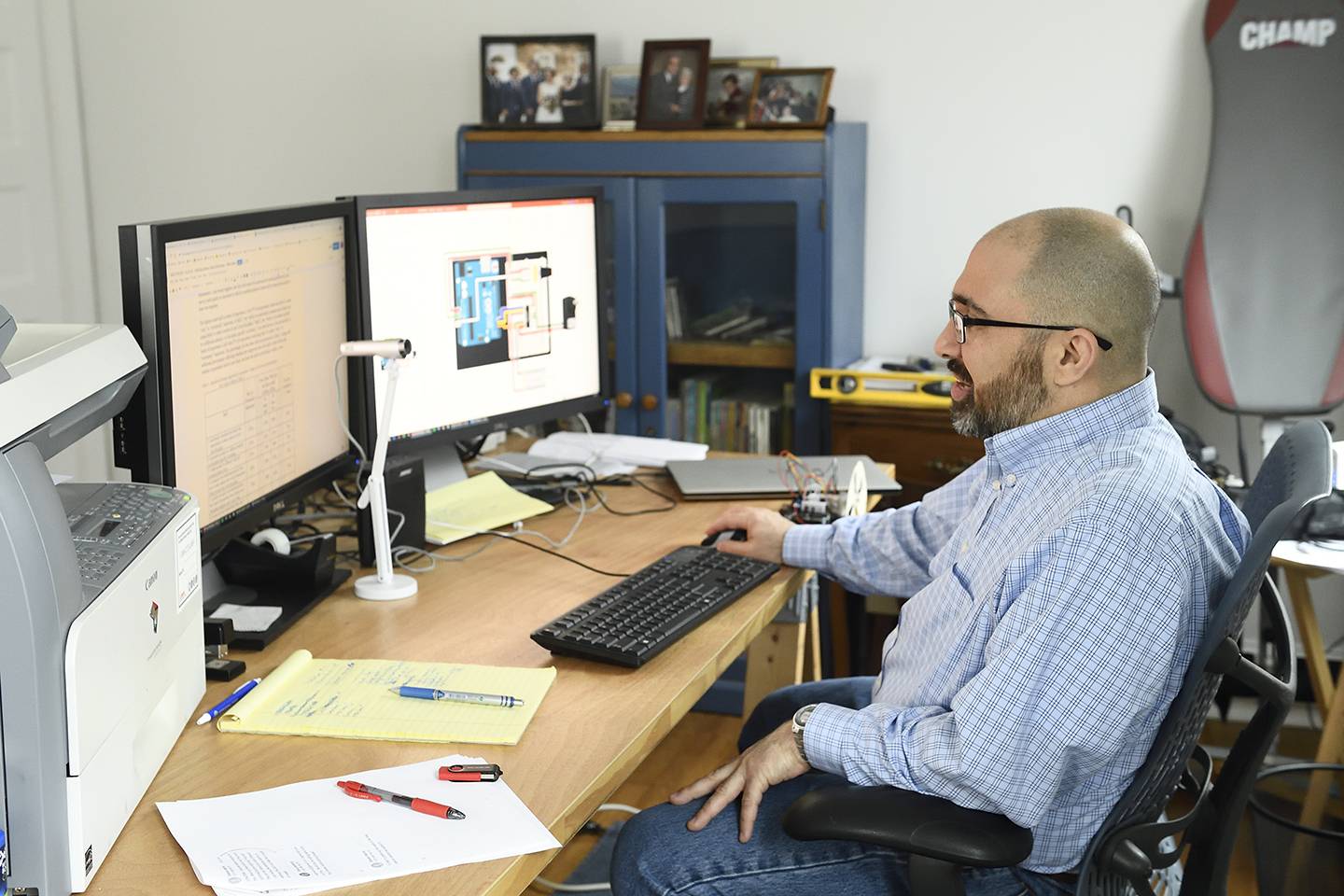
Image caption: Steven Marra leads an online class
Image credit: Will Kirk / Johns Hopkins University
In addition to finishing their crane designs, the sophomores must also build something from scratch and perform a "mechanical dissection." One student is building a miniature wind turbine to charge his cell phone; another is taking apart a broken antique clock to try to diagnose the problem.
All students must deliver a short video presentation of their projects at the end of the semester. Marra says they can add these videos to their engineering portfolios when they look for jobs or internships, which keeps students motivated to work hard at home.
"The animal project is still really fun, even at home, and it gives me something to do while practicing social distancing," says first-year Rishibrata Biswas. "Even though the project has changed, I still see it as an opportunity to show off what I'm capable of."
Posted in Science+Technology, Student Life
Tagged mechanical engineering, coronavirus, covid-19




